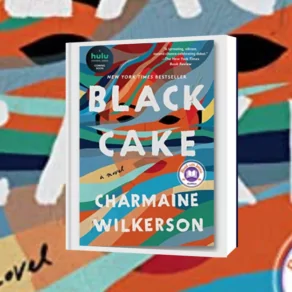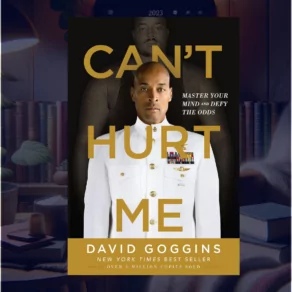“Made to Stick: Why Some Ideas Survive and Others Die” by Chip and Dan Heath is an illuminating book that captivated me with its profound insights into the world of ideas. Filled with compelling stories and grounded in solid research, the book explores why some ideas catch on and stick in our minds, while others fade into oblivion.
Inspired by Mark Twain’s observation about the speed of lies versus truth, the Heath brothers begin by noting how urban legends, conspiracy theories, and even fake news often spread effortlessly and become ingrained in public consciousness, while valuable ideas from teachers, entrepreneurs, politicians, and journalists struggle to gain traction. They then embark on a mission to dissect the anatomy of ‘sticky’ ideas, to understand what gives them their staying power.
The core of the book is structured around six key principles, dubbed the ‘SUCCESs’ model: Simplicity, Unexpectedness, Concreteness, Credibility, Emotions, and Stories. From the “kidney theft ring” hoax to a coach’s lessons on sportsmanship and a revolutionary product vision at Sony, we see these principles at work, forming the basis for ideas that stick.
[Related: Summary of Sapiens A Brief History of Humankind]
For instance, Simplicity emphasizes the power of stripping an idea down to its core, distilling it into a single, profound truth. Unexpectedness is about capturing attention, breaking patterns, and challenging existing schemas.
Concreteness stresses the use of sensory language to paint vivid mental pictures, while Credibility underlines the need to provide believable and authentic sources or contexts. Emotions are about making people feel something, evoking empathy or anger, amusement, or awe. Finally, Stories encourage a narrative approach to encapsulate ideas, allowing listeners to mentally simulate events and empathize with characters.
“Made to Stick” is packed with fascinating case studies. One of my favorites involved a Nobel Prize-winning scientist who drank a glass of bacteria to prove his theory about stomach ulcers. Another told of charities leveraging the “Mother Teresa Effect,” illustrating the power of individual, emotional stories over raw statistics in inspiring donations. There’s also the story of an elementary school teacher whose racial-prejudice-prevention simulation had a lasting impact on her students.
Reading “Made to Stick” was an engaging and insightful journey. It expanded my understanding of how ideas spread, helped me appreciate the power of effective communication, and provided practical tools to make my own messages stickier. The book blends academic research with real-world examples in a style that’s thought-provoking, eye-opening, and often amusing.
Whether you’re a teacher trying to make lessons memorable, an entrepreneur pitching a new product, or simply someone looking to express ideas more effectively, “Made to Stick” provides a blueprint for crafting messages that resonate and endure. It’s a transformative read that I believe will change the way you communicate. This book will stick with you, just like the powerful ideas it explores.
Made to Stick Book Club Questions
Here are some interesting book club questions for Made to Stick
- What, in your opinion, is the most compelling example given by the authors that demonstrated one or more of the SUCCESs principles in action?
- Can you think of any ‘sticky’ ideas from your own life or the media that clearly follow the SUCCESs model? How do they do so?
- Do you agree with the authors’ assertion that simplicity is crucial to making ideas ‘sticky’? Are there instances where complex ideas have become widely accepted and understood?
- How can the principle of unexpectedness be used positively in communication without turning into a ‘shock factor’ or ‘clickbait’? Can you think of examples where this balance is struck well?
- The authors propose that emotions play a vital role in making ideas stick. How has this principle played out in your own experience?
- The book emphasizes the power of stories in making ideas stick. How has storytelling been effectively (or ineffectively) used in your professional or personal life?
- In what ways has “Made to Stick” changed your perspective on communication? Are there principles from the book that you plan to incorporate into your own communication style?
- Discuss the ‘Mother Teresa Effect’ as it is presented in the book. How might this principle be applied in a practical context?
- Consider the book’s case studies. Which ones resonated with you the most and why?
- How do you think the principles of ‘stickiness’ apply to digital communication, especially on social media platforms?
- What are some potential drawbacks or challenges of applying the SUCCESs model? Are there any instances where these principles might not be appropriate or effective?
- After reading “Made to Stick,” what key takeaways will you bring to your future efforts in communicating ideas?
Final thoughts
“Made to Stick” by Chip and Dan Heath! genuinely provides a treasure trove of insights and actionable advice for anyone looking to make their ideas “sticky,” resonant, and impactful. From the SUCCESs model to the anecdote about the Nobel Prize-winning scientist who drank bacteria (talk about commitment to an idea), there’s something in this book for everyone. Whether you’re an educator, a communicator, or just a curious mind like me, “Made to Stick” offers you the tools to transform the way you share and absorb ideas.So, go ahead, challenge yourself to reframe how you approach sharing ideas—you won’t regret it!
I hope you find this Made to Stick summary helpful!







